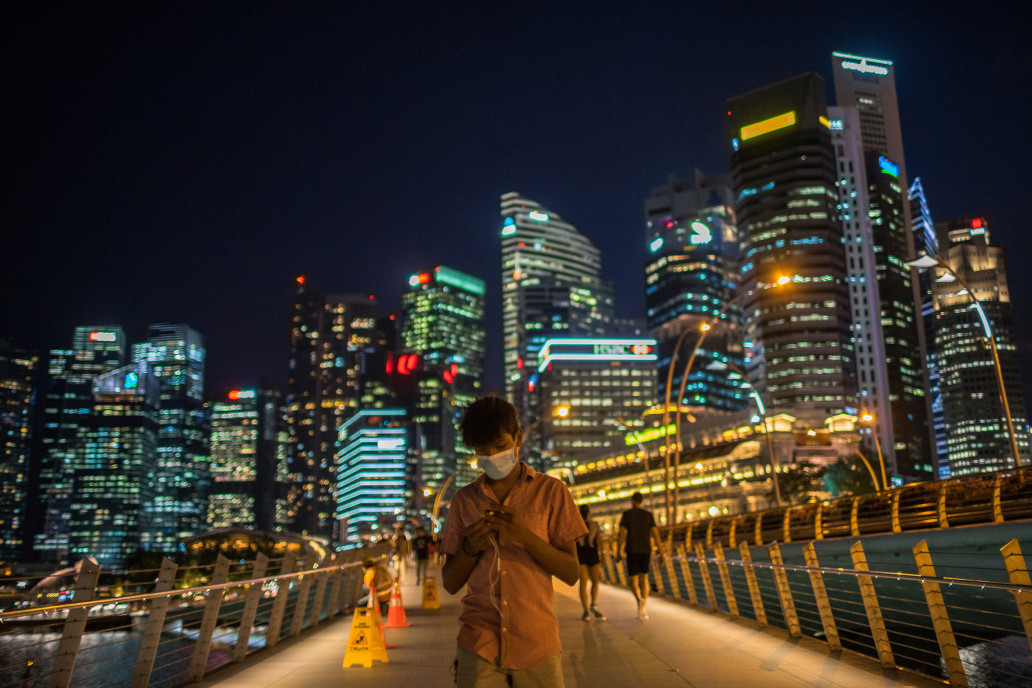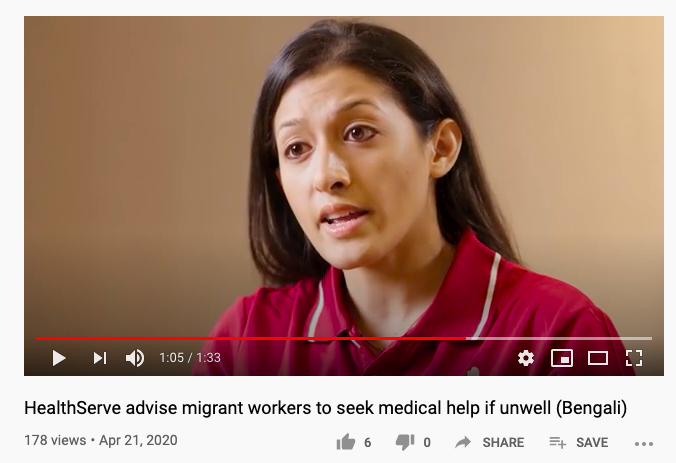
After winning global acclaim for its efforts to rein in the spread of coronavirus, the Southeast Asian island nation of Singapore has now become a cautionary tale after failing to stop the spread of the virus among its most vulnerable community – migrant workers.
It is now dealing with two separate outbreaks – one in the wider community and another in often cramped and unsanitary foreign workers' dormitories.
As of April 22, Singapore has reported more than 10,000 COVID-19 cases, the highest in the region. Singapore has seen cases jump more than a thousand in the past two days, with more than 90 percent of new cases coming from dormitories.
Read more: Virus or hunger? – Asia's migrant workers' COVID-19 dilemma
As the Southeast Asian nation grapples to contain the coronavirus outbreak in confined spaces, two separate strategies have emerged between citizens and long-term residents, and temporary migrant workers.
Two outbreaks in one city
Since a Bangladeshi worker fell ill due to the coronavirus in February, multiple COVID-19 clusters have surfaced in construction sites and foreign dormitories, forming the majority of the country's infections.
Simultaneously, outside these dormitories, the number of cases remain stable, but a growing number of unlinked cases have forced authorities to extend and impose more stringent "circuit breaker" or partial lockdown measures by a month to June 1.

Trend of infections in the wider community and in dormitories. Gao Hongmei/CGTN
Trend of infections in the wider community and in dormitories. Gao Hongmei/CGTN
To contain the spread of COVID-19 in dormitories, authorities have employed a fencing in strategy and "aggressive testing," including testing those with mild symptoms. Those who are tested positive are moved to community isolation facilities or hospitals, while others will need to be quarantined.
In 43 licensed dormitories – housing anywhere between 3,000 and 25,000 workers, mainly from South Asia – 18 have been designated as isolation areas as of April 21. In effect, workers living in these dormitories are under a 14-day quarantine and are required to stay in rooms usually shared with 10-19 others.
Read more: Singapore fences in migrant workers to contain COVID-19
And with the rollout of stricter measures, those living in other dormitories will also not be allowed to leave the compound.

A workers' dormitory in Singapore. /Singapore Ministry of Manpower Facebook page
A workers' dormitory in Singapore. /Singapore Ministry of Manpower Facebook page
Meanwhile, to ensure the country continues running, around 10,000 healthy migrant workers in essential services have been moved to floating hotels, military camps or empty public housing flats to prevent cross infection.
Tackling basic needs
The ever-increasing demands on providing appropriate measures for social distancing, raising hygiene standards and providing basic necessities like food, healthcare, soap and masks have put a strain on dormitory operators, who are scrambling to cope.
And non-governmental organizations, who have for years provided healthcare and welfare services to migrant workers have stepped in to help. Using their engagement with workers over the years, they have become a key point in helping bridge gaps in the coronavirus response.
"We are providing input that they may not be able to get, because of our close relationships with many different people involved in this, especially with our trust with migrant workers," said Suwen Low, spokesperson for HealthServe, a nonprofit providing subsidized health care to migrant workers, to CGTN Digital.

HealthServe is uploading videos in Bengali to cater to migrant workers. /Screenshot from YouTube
HealthServe is uploading videos in Bengali to cater to migrant workers. /Screenshot from YouTube
The organization is also playing a key role in bridging communication gaps and language barriers, and taking care of the mental well-being of workers, who are unsure of what is going on and worried about their future.
"There are employers contacting us, saying: 'Hey, could you help us out by talking to our workers for us'" said Low.
The organization has already held various sessions with workers under lockdown, who are "anxious, fearful, wondering what's going on." "We are helping with the application and also a listening ear, and all the sessions were guided by psychiatrists," she added.
HealthServe also rolled out a hotline, with the help of telephone operators in Singapore on April 13, where migrant workers in need of help can reach them. And according to Low, the organization is expected to start a remote counseling service this week, which already has about 70 to 100 volunteer counsellors, psychiatrists, social workers and interpreters on board.
Creating the right feedback loop
The coronavirus outbreak in the city state's dormitories has forced it to confront its treatment of temporary migrant workers, who mainly work in the construction sector in the shiny cosmopolitan city.

A couple wearing face masks walk past the landmark Merlion statue in Singapore. /AP
A couple wearing face masks walk past the landmark Merlion statue in Singapore. /AP
Over the past few years, rights groups and grassroots organizations have been campaigning for better treatment of temporary workers, with groups like Transient Workers Count Too calling cramped and unsanitary conditions a "ticking time bomb."
With the NGOs, employers and governments working together, Pia Oberoi, senior adviser for the United Nations High Commissioner for Human Rights, Southeast Asia told CGTN that it's a good time to go back to the drawing board and think of long-term solutions.
"One thing that this pandemic has made very clear to us and this is across the world, that our health is only as good as the least healthy person in our environment. It's not really going to be possible to say: 'Well, I'm going to forever shut myself off from the inequality,'" said Oberoi.
Singapore's government has made a commitment to this, with Manpower Minister Josephine Teo saying is no doubt that standards need to be raised, but called for patience. "Let us cross this important hurdle during this 'circuit breaker,' and then we can deal with this issue in a dedicated way. You have my word," she wrote in a Facebook post on April 6.
(Cover image: A man wearing mask is seen walking at Singapore's CBD. /AP)